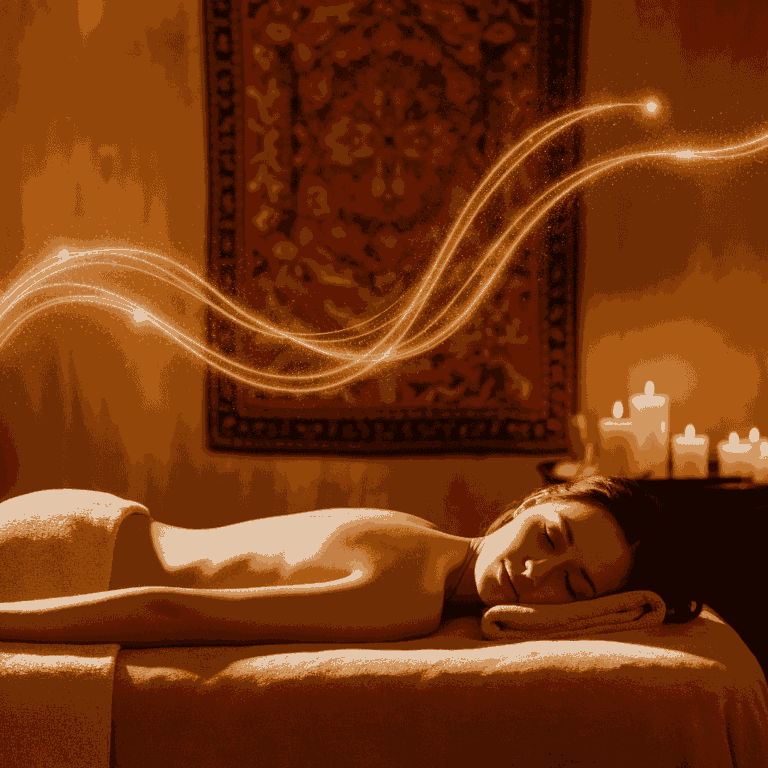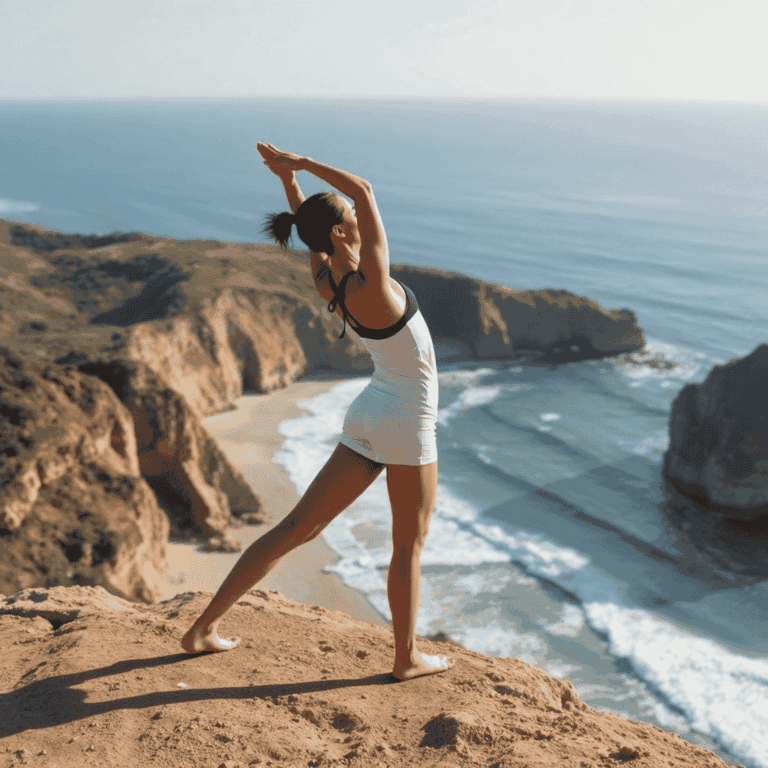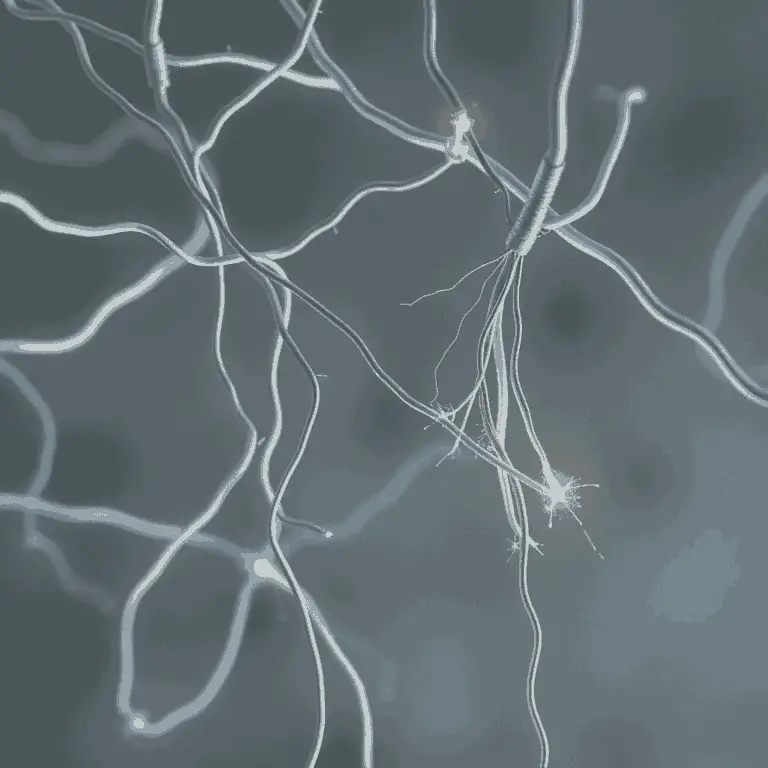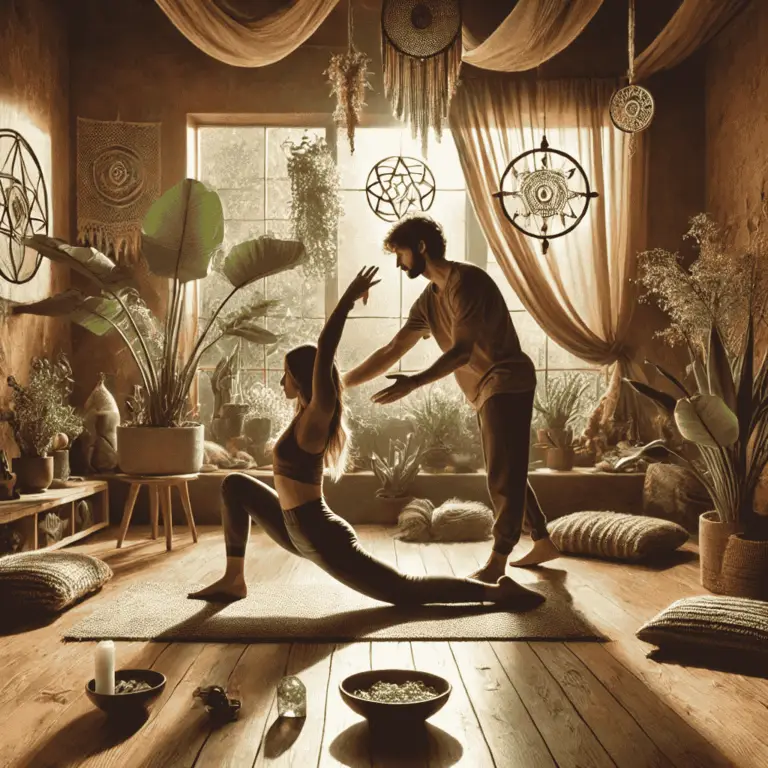Dynamic stretching has long been misunderstood as the mere warm-up routine for athletes. However, its capacity to bridge body, mind, and energy fields makes it an untapped treasure in holistic health. When integrated into massage therapy and metaphysical energy work, dynamic stretching becomes more than just movement—it becomes medicine, meditation, and transformation.
What Is Dynamic Stretching?
Dynamic stretching refers to controlled, active movements that gently take joints and muscles through their full range of motion. Unlike static stretching, where a position is held for a certain duration, dynamic stretching keeps the body in motion, mimicking functional movements used in daily life or athletic performance. This makes it ideal for preparing the body and mind for deeper therapeutic interventions.
For example, arm circles, leg swings, or spinal twists performed with breath awareness can not only increase blood flow but awaken energetic currents and prepare the body for deeper healing modalities.
Benefits of Dynamic Stretching
There’s more to dynamic stretching than just limber limbs. Its benefits ripple through physical, mental, and energetic dimensions:
- Physiological: Improves circulation, lubricates joints, increases range of motion, and reduces injury risk.
- Neurological: Enhances proprioception, engages the nervous system, and heightens coordination.
- Energetic: Opens stagnant pathways, prepares chakras, and aligns energy fields.
- Emotional: Releases tension held in tissues, often facilitating emotional catharsis.
When performed mindfully, dynamic movement becomes a bridge that links the physical body to more subtle realms of consciousness and energy.
The Science of Dynamic Movement
Dynamic movement engages both the muscular and nervous systems in synergy. As the brain sends motor commands to muscles, sensory feedback loops inform the brain of tension, resistance, and movement quality. This real-time dialogue is vital for fluid motion and mind-body connection.
From a biomechanical standpoint, dynamic stretching utilizes reciprocal inhibition—when one muscle contracts, its antagonist relaxes. This principle enhances flexibility and functionality. It’s no surprise that elite athletes, dancers, and yogis all swear by it.
Dynamic Stretching in Massage Therapy
Massage therapists can strategically integrate dynamic stretching into their sessions to enhance outcomes:
- Before Massage: Gentle dynamic stretches can warm up the tissues, making them more pliable.
- During Massage: Interspersing passive joint movements can stimulate proprioceptors and deepen client awareness.
- After Massage: Closing with dynamic movement can help lock in new patterns and prevent re-tension.
By weaving in movement, therapists empower clients to participate in their own healing—a collaboration rather than a passive process.
Enhancing Energy Flow With Movement
Energy flows where attention and motion go. Movement naturally stimulates meridians, nadis, and energetic pathways. Dynamic stretching activates the body’s innate qi or prana flow, dissolving blockages and restoring harmony.
Certain stretches correspond with specific chakras—hip openers for the sacral chakra, thoracic rotations for the heart center. With intentional breathing and visualization, these motions can become powerful tools of energetic recalibration.
The Mind-Body Connection
Motion and emotion are intimately linked. As the body moves, the mind follows suit—shifting from stagnation to flow, from chaos to clarity. Dynamic movement engages the prefrontal cortex (linked to planning and mindfulness) while calming the amygdala (associated with fear and stress).
Thus, incorporating dynamic movement into healing practices helps center the mind, regulate emotions, and create a fertile ground for deep transformation.
Preparing the Body for Healing
Whether it’s massage, Reiki, or crystal therapy, the body must be receptive. Dynamic stretching acts as the warm-up to energetic healing, raising the vibration of tissues and awakening dormant areas.
Think of it like tuning an instrument. Before the symphony of healing can begin, the body must resonate in harmony. Dynamic motion does just that—it retunes the body’s biofield.
Massage Techniques That Complement Dynamic Stretching
Not all massage techniques are created equal when it comes to pairing with movement. Some that work beautifully in tandem include:
- Myofascial Release: Follow up with movement to prevent re-adhesion.
- Thai Massage: Already incorporates assisted dynamic stretches.
- Trigger Point Therapy: Gentle stretching can help integrate the release.
- PNF Stretching (Proprioceptive Neuromuscular Facilitation): Alternates contractions and stretches, aligning beautifully with dynamic principles.
Stretch and Breath: A Therapeutic Pair
Breath is the silent partner in every stretch. Coordinating inhalations with lengthening movements and exhalations with deepening actions enhances oxygenation and parasympathetic activation. This not only boosts physical results but deepens relaxation.
For example, exhaling while twisting can facilitate deeper spinal release. Breathing rhythmically also helps shift the mind into a meditative state—especially helpful for those resistant to stillness.
Stretching as Energy Work
In sacred traditions, every movement is a ritual. A simple spinal roll can become a clearing sweep. A side bend might become an invocation of lunar energy.
When performed with awareness, dynamic stretching becomes a form of subtle energy healing. Therapists and practitioners can guide clients through motions while visualizing the release of energetic debris or the infusion of light.
Mindful Motion: Meditation in Movement
Some individuals struggle with seated stillness, but movement can offer the same meditative benefits. Dynamic stretches—when practiced with breath, intention, and focus—quiet the mind and center awareness.
Practices like Qi Gong and Pranayama incorporate motion and breath as central spiritual tools. Stretching, in this context, becomes prayer in action.
Dynamic Movement for Emotional Release
The body holds stories. Trauma, grief, and joy are all etched into our fascia, our joints, and our posture. Dynamic movement helps access and express these imprints.
Certain movements can evoke spontaneous emotional release—a shaking limb, a sudden sob, a cleansing yawn. This is healing in its rawest form—where the conscious mind gets out of the way, and the body speaks its truth.
(Continued in next message with remaining sections and FAQs)
Grounding Through Motion
In the world of metaphysical energy work, grounding is key. Dynamic movement helps draw scattered energy back into the body and reconnects individuals with the Earth’s frequency. Movements like lunges, squats, and downward reaches create a kinetic pull downward, assisting the energetic descent.
When the body is in motion—especially rhythmical, repetitive movement—it sends signals to the root chakra, anchoring consciousness and calming mental overactivity. Therapists can leverage this by using low-body dynamic stretches early in sessions.
Realigning Energy Channels Through Stretching
From Traditional Chinese Medicine to Ayurveda, energy flow is believed to follow predictable channels. Dynamic movement opens and realigns these channels much like acupuncture or Reiki would—but through physical activation.
Stretching side-to-side engages the gallbladder meridian. Twisting through the torso touches the liver and stomach lines. By understanding these maps, practitioners can design movement sequences that directly target energetic congestion.
Common Dynamic Stretches Used by Therapists
Some widely-used and effective stretches include:
| Stretch | Target Area | Benefit |
|---|---|---|
| Arm Circles | Shoulders, chest | Improves shoulder mobility |
| Spinal Rolls | Spine, back muscles | Releases tension along vertebrae |
| Leg Swings | Hips, hamstrings | Enhances hip joint fluidity |
| Thoracic Twists | Mid-back, core | Opens heart chakra, increases spinal mobility |
| Cat-Cow Flow | Spine, neck, sacrum | Aligns breath and motion |
Therapists can guide clients through these prior to massage or use them as a check-in during longer bodywork sessions.
Client-Centered Stretch Protocols
One size never fits all in healing. Dynamic stretching must be tailored. Factors to consider include:
- Client’s physical limitations
- Emotional state
- Energy sensitivity
- Treatment goals
A trauma-informed therapist might begin with breath-led wrist circles, while a physically active client may benefit from deep lunges and lateral bends. Listening to both body language and energetic cues is vital.
When and How to Introduce Dynamic Stretching in Sessions
Timing is crucial. Here’s a general guide:
- Start of Session: Helps awaken tissues and calm nerves.
- Mid-Session (Post Deep Tissue): Aids integration and prevents soreness.
- End of Session: Locks in benefits, re-aligns posture, and fosters embodiment.
Introducing motion gradually and with verbal explanation builds trust and enhances effectiveness. Clients are often more engaged when they understand the “why” behind each motion.
Contraindications and Safety Tips
Dynamic stretching, while safe, isn’t universally appropriate. Avoid or modify when:
- Client has acute injuries or inflammation
- There’s recent surgery
- Dizziness or balance issues are present
- Client is in chronic pain or on heavy medication
In such cases, opt for passive stretching or energy-only work.
Energetic Hygiene During Movement Work
Therapists moving with clients must protect their own energy. Suggestions include:
- Grounding before sessions
- Using breath to stay present
- Visualizing energetic boundaries
- Clearing themselves post-session with salt, sage, or intention
Dynamic work can open energetic fields rapidly, making proper closure and aftercare essential.
Bridging Eastern and Western Modalities
Dynamic stretching provides a natural meeting point for East and West. It satisfies the Western need for physical evidence and the Eastern pursuit of energetic flow. When combined, the client experiences not just relaxation—but transformation.
A therapist who speaks both languages—anatomical and energetic—becomes a true body whisperer.
Stretching and Lymphatic Flow
Lymphatic drainage improves with motion. Gentle dynamic stretches compress and release tissues, pushing lymphatic fluids through nodes and out of stagnation.
This detoxifying effect supports immunity, reduces puffiness, and enhances overall vitality. Adding essential oils like lemon or rosemary can heighten this process.
Dynamic Movement and Nervous System Regulation
Movement modulates the autonomic nervous system. Gentle dynamic stretching helps transition from fight-or-flight (sympathetic) to rest-and-digest (parasympathetic).
Movements coordinated with slow breath stimulate the vagus nerve—a gateway to calm, clarity, and compassion.
Psychosomatic Integration Through Stretching
“Your issues are in your tissues,” as they say. Stretching bridges the gap between somatic sensation and conscious awareness. When clients tune into movement, they often access insights, emotions, and memories.
Therapists trained in somatic release can use dynamic motion as a dialogue—a way to gently “ask” the body what it needs to heal.
Case Studies: Success Stories
- Client A: A trauma survivor found spinal rolling with breath more effective than traditional talk therapy in accessing emotions.
- Client B: An athlete resolved chronic shoulder tightness by combining myofascial work with guided dynamic arm swings.
- Client C: A sensitive empath reported feeling “cleared and grounded” after a movement-based Reiki session integrating dynamic yoga flows.
These stories underscore the power of moving energy, not just muscles.
Dynamic Stretching Routines for Home Practice
Empower your clients! Create short, customized routines they can do between sessions:
- 5-minute wake-up flow
- Evening grounding series
- Emotional release routine
- Chakra-balancing stretch set
Offering printable PDFs or videos adds massive value and keeps the healing going beyond your table.
How to Train as a Dynamic Movement Practitioner
Look into courses in:
- Somatic movement therapy
- Thai yoga massage
- Qi Gong instructor programs
- Yoga therapy with a focus on trauma and energy healing
Always choose programs with anatomical and energetic perspectives.
Stretching the Aura: Myth or Mechanism?
Some healers believe the aura expands and contracts with motion. While not visible to all, clients often report sensations of “lightness,” “expansion,” or “clarity” post-stretch.
Whether it’s energetic truth or metaphor, the effects are tangible. Motion seems to sweep the aura like a broom, refreshing and re-aligning it.
Tools and Props That Aid Dynamic Movement
Enhance sessions with:
- Foam rollers
- Yoga straps
- Resistance bands
- Therapy balls
- Tuning forks or singing bowls for sound integration
Props invite creativity and support varied body types and conditions.
Combining Sound and Movement
Sound and motion are a primal pair. Try these integrations:
- Use crystal bowls to accompany spinal flows.
- Chime a tuning fork on the sacrum during forward folds.
- Vocal toning during movement to clear throat chakra blocks.
Music, mantra, and movement co-create a potent healing ritual.
Conclusion: A Moving Path to Wholeness
Dynamic stretching is far more than a physical tool. It is a doorway—a threshold into deeper connection with self, source, and subtle energy. When infused with intention, breath, and presence, every stretch becomes a story, every motion a meditation.
By integrating dynamic stretching into massage therapy and metaphysical energy work, we don’t just treat the body—we dance with the soul.
FAQs
Can I use dynamic stretching with elderly clients?
Yes, with modifications. Focus on gentle, slow-paced movements that prioritize balance and joint safety.
Is dynamic stretching safe during pregnancy?
It can be, especially in early stages and with practitioner guidance. Always consult a doctor and use prenatal-approved moves.
How often should I practice dynamic stretching?
Daily practice is ideal, even if for 5–10 minutes. Consistency enhances results and fosters body awareness.
Do I need to be flexible to benefit from dynamic stretching?
Not at all. Flexibility comes with time. The primary goal is fluidity, not depth.
Can I combine dynamic stretching with other healing modalities?
Absolutely. It’s an excellent complement to Reiki, yoga, massage, acupuncture, and somatic therapies.
What’s the best time of day for dynamic movement?
Morning is great for energizing, while evening routines help unwind and process the day.










